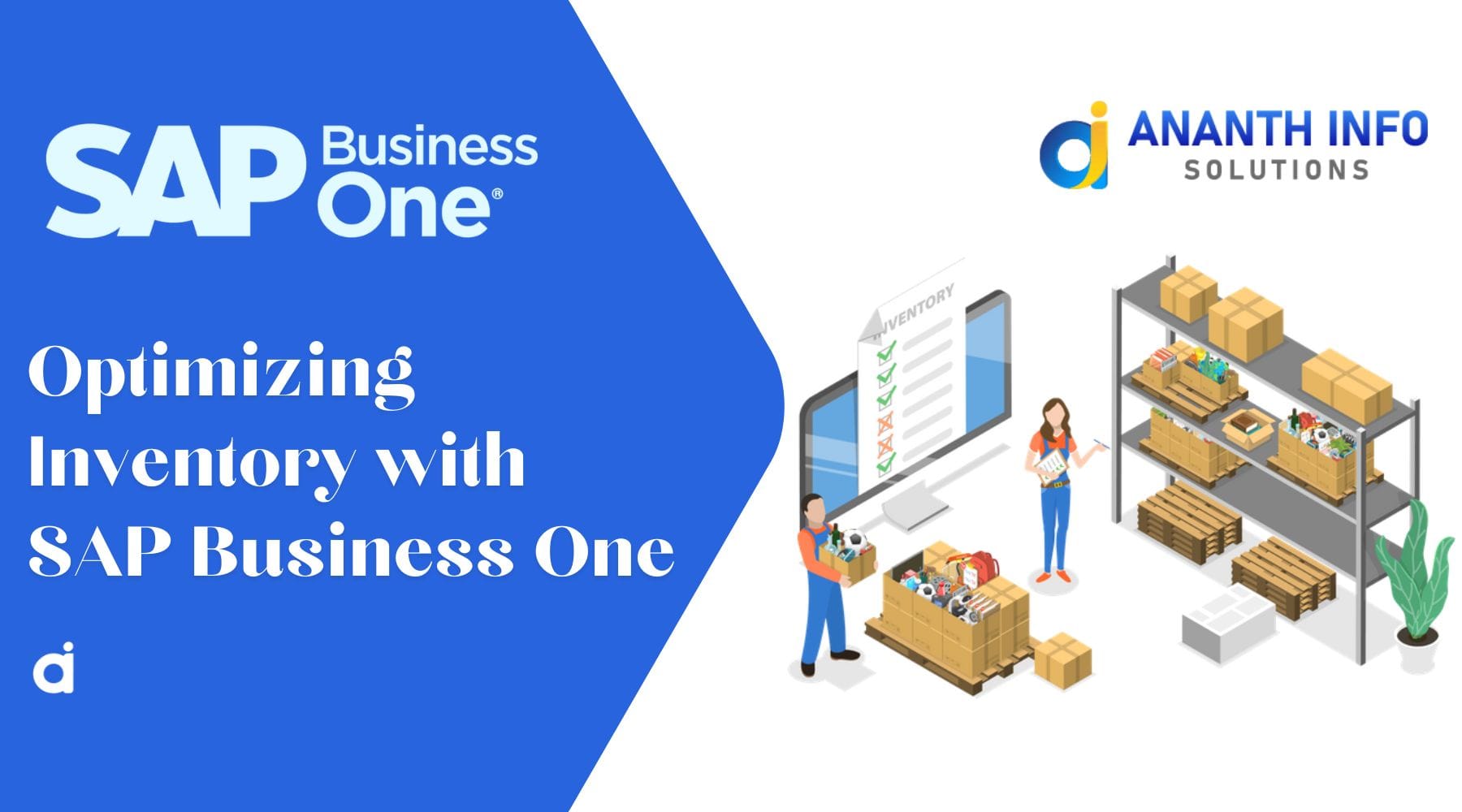Managing stock can be tough for businesses. SAP Business One has a great feature for this, called inventory management. This article will show you how to use it to solve your stock issues.
Keep reading; you might find the help you need.
Key Takeaways
- SAP Business One improves stock management by offering real – time tracking of products, from arrival to delivery, ensuring businesses maintain optimal stock levels.
- Integrating eCommerce with SAP Business One allows for live inventory updates across online platforms, preventing overselling and keeping customers satisfied.
- Materials Requirements Planning (MRP) within SAP Business One helps predict needed materials accurately, reducing excess inventory and cutting production costs.
- The software’s integration with Business Intelligence (BI) and analytics aids in making informed decisions quickly based on data trends and customer demands.
- Real – time data management facilitated by SAP Business One transforms supply chain efficiency, alerting businesses to replenish or reduce stock timely.
Strategies for Better ERP Inventory Management
Mastering ERP inventory management can make a huge difference for your business. It helps you track products from when they arrive in your warehouse to the moment they leave for delivery.
This system also keeps an eye on stock levels, making sure you have just enough goods to meet demand without overstocking. With tools like real-time data tracking and analysis, businesses can spot trends and adjust quickly.
For example, if a certain product starts flying off the shelves faster than expected, you can reorder before running out of stock. Likewise, if items are moving slowly, you might decide to run a promotion to clear space for new inventory.
Efficient use of eCommerce solutions within your ERP system allows you to sell across multiple online platforms without losing track of your stock count. This approach ensures that all sales channels update inventory figures instantly, eliminating the risk of selling more items than you actually have available—a common issue that leads to customer frustration and lost sales.
Materials requirements planning (MRP) is another critical strategy within ERP
Real-Time Management of Inventory Data
Real-time management of inventory data allows businesses to track goods issue, goods receipt, and returns delivery instantly. Using SAP Business One with connected barcode scanners makes this process seamless.
This setup helps companies keep an accurate count of stock levels, including serial and batch numbers for each SKU (stock keeping unit). I’ve seen firsthand how this real-time insight prevents stockouts and overstock situations, ensuring that inventory levels are always optimised.
Integrating eCommerce platforms with SAP Business One transforms how retailers manage online stocks. Live updates on eCommerce supply means they can respond swiftly to changes in customer behaviour and demand forecasting.
This dynamic approach supports better decision-making around purchase orders and reduces the risk of out-of-stock or surplus items sitting in warehouses. With these tools, businesses achieve a fine balance between meeting market demand and maintaining profitability without engaging in manual data entry or guesswork about future needs.
eCommerce Inventory Management
Managing your online shop’s stock becomes a breeze with SAP Business One. This software integrates smoothly with eCommerce platforms, giving you instant updates on what’s in stock.
You won’t get caught off guard by out-of-stock items or unexpected backorders anymore. I’ve seen firsthand how updating eCommerce inventory in real-time can transform a business, keeping customers happy and reducing stress for staff.
Using this tool means every product sale or return gets tracked immediately across all online channels. Imagine selling products on different platforms without worrying about overselling or running out of popular items too quickly.
This was a game-changer for us, as it meant we could focus more on meeting our customer’s needs and less on manual stock checks and adjustments. Automatic updates take the guesswork out of supply chain management, making sure your virtual shelves are never empty nor overflowing.
Materials Requirements Planning (MRP)
Materials Requirements Planning (MRP) stands as a crucial component in SAP Business One, enabling businesses to streamline their supply chains and production schedules. This system cleverly predicts the raw materials and components needed, ensuring orders are placed at the perfect time.
It transforms guesswork into precision, aligning production with real-time demand and drastically cutting down on excess inventory. With MRP, companies’ see a significant drop in production costs because they purchase only what is necessary when it is necessary.
SAP Business One takes this strategy further by automating order management and integrating with vendor systems for seamless communication. Our team at Ananth Info Solutions has worked hands-on with these features, witnessing how tailored MRP solutions fit unique business needs like a glove.
Clients have shared how transitioning to an automated MRP within SAP Business One transformed their operation’s efficiency.
Empowering insights from real-time data pushes our company forward.
Leveraging Business Intelligence and Analytics with SAP Business One
SAP Business One takes inventory optimisation to the next level by integrating Business Intelligence (BI) and analytics. This powerful feature helps businesses make smarter decisions backed by data.
Companies can now spot trends, understand customer demands, and adjust their strategies in real time. The built-in inventory management module comes alive with BI, turning raw data into actionable insights.
This means managers no longer have to guess what will sell or sit on shelves; they see clear patterns and respond quickly.
From my experience using SAP Business One, the difference in decision-making speed is night and day. Before integrating BI and analytics, responding to market changes felt like steering a large ship through foggy waters—slow and uncertain.
With these tools, it’s like having a precise map and a faster boat. You get instant alerts about stock levels, leading you to manage your supply chain more effectively. You can anticipate needs for products before running out or overstocking them – an essential factor for maintaining optimum inventory levels without causing lag between demand and supply.
Next, let’s explore how this impacts overall operations beyond just inventory management.
Conclusion: The Impact of SAP Business One on Inventory Optimisation
Optimising stock with SAP Business One brings big changes. With features like real-time data access and materials requirements planning, companies handle their goods more smartly. This software makes sure shops never run out of products and factories always have what they need.
Working with experts from Ananth Info Solutions gives businesses the edge in managing their resources well. ERP systems transform how we track, manage, and plan for inventory needs, making every part of the supply chain smoother and more efficient.
For further insights into enhancing your strategic decisions, read our detailed guide on leveraging business intelligence and analytics with SAP Business One.
FAQ’s on Optimizing Inventory with SAP Business One
1. What is SAP Business One and how does it help with inventory?
SAP Business One is an ERP software that helps retail companies manage their inventories through automatic or manual allocations, ensuring they always have the right amount of stock.
2. Can SAP Business One predict when I need to reorder stock?
Yes, by using material requirements planning and learning algorithms, SAP Business One can forecast demand management needs, alerting you on when to reorder spare parts or other items.
3. How does SAP Business One improve sales and operations planning?
This ERP system strategy integrates business planning processes, allowing for better coordination between sales forecasts and inventory levels, thus improving overall efficiency.
4. Does SAP Business One support cycle counting for inventories?
Absolutely! Cycle count features in SAP Business One enable businesses to regularly check their inventory accuracy without disrupting daily operations, making sure data is always up-to-date.
5. Can I adjust prices easily in SAP Business One based on my inventory levels?
Indeed! The ERP software allows for flexible price adjustments based on current supply levels and demand trends, helping you maintain competitive pricing while managing your accounting system effectively.






